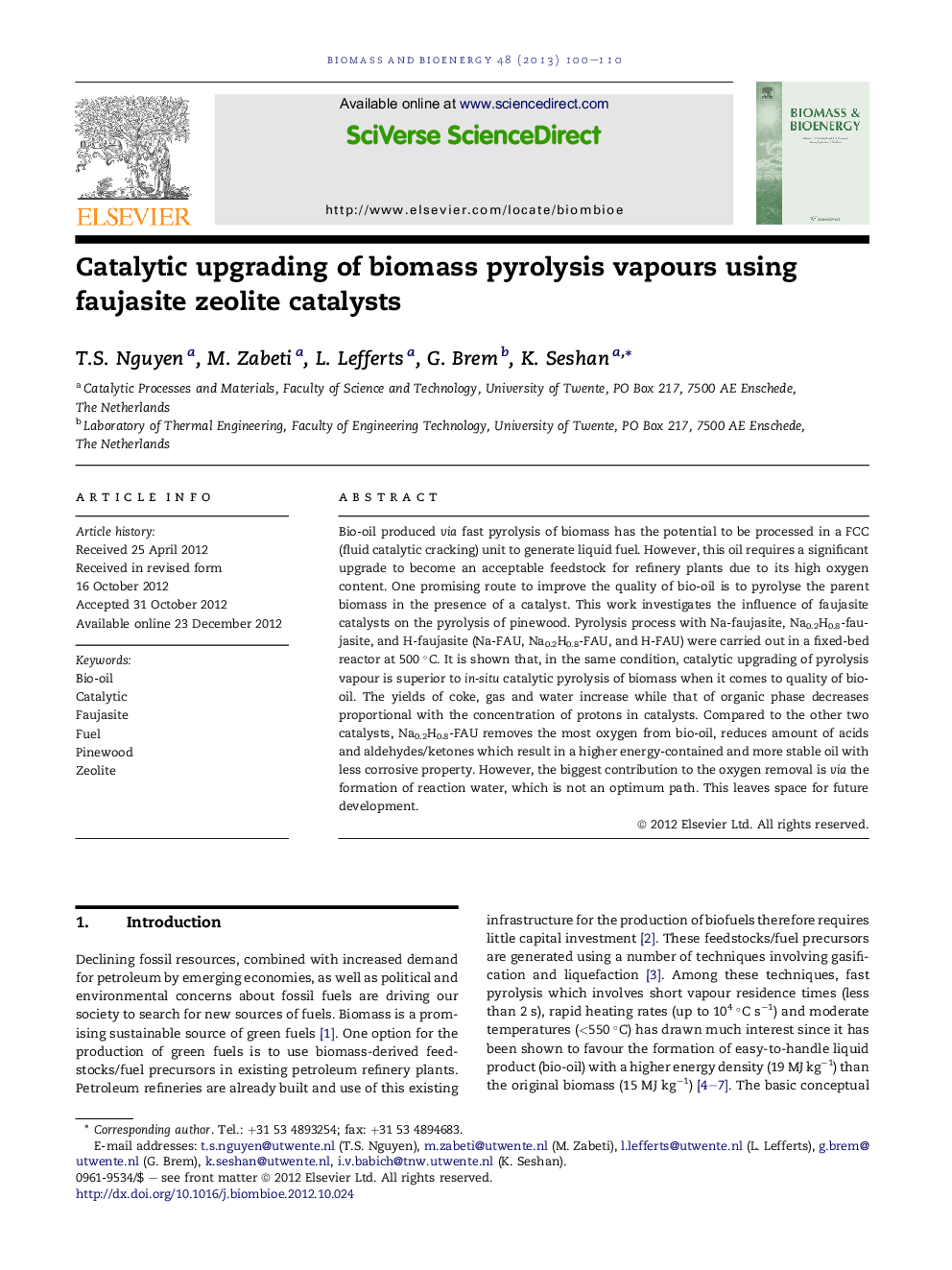| Article ID | Journal | Published Year | Pages | File Type |
|---|---|---|---|---|
| 677393 | Biomass and Bioenergy | 2013 | 11 Pages |
Bio-oil produced via fast pyrolysis of biomass has the potential to be processed in a FCC (fluid catalytic cracking) unit to generate liquid fuel. However, this oil requires a significant upgrade to become an acceptable feedstock for refinery plants due to its high oxygen content. One promising route to improve the quality of bio-oil is to pyrolyse the parent biomass in the presence of a catalyst. This work investigates the influence of faujasite catalysts on the pyrolysis of pinewood. Pyrolysis process with Na-faujasite, Na0.2H0.8-faujasite, and H-faujasite (Na-FAU, Na0.2H0.8-FAU, and H-FAU) were carried out in a fixed-bed reactor at 500 °C. It is shown that, in the same condition, catalytic upgrading of pyrolysis vapour is superior to in-situ catalytic pyrolysis of biomass when it comes to quality of bio-oil. The yields of coke, gas and water increase while that of organic phase decreases proportional with the concentration of protons in catalysts. Compared to the other two catalysts, Na0.2H0.8-FAU removes the most oxygen from bio-oil, reduces amount of acids and aldehydes/ketones which result in a higher energy-contained and more stable oil with less corrosive property. However, the biggest contribution to the oxygen removal is via the formation of reaction water, which is not an optimum path. This leaves space for future development.
► Upgrading of biomass pyrolysis vapours was carried out using faujasite catalysts. ► Catalytic upgrading of pyrolysis vapours is superior to in-situ catalytic pyrolysis of biomass. ► Optimization of the amount of Na+ and H+ in faujasites is important. ► Losing high-energy hydrogen via the formation of reaction water is a drawback.
